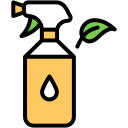DIY Chemical-Free Furniture Polish

Previous
Next
Oil-Based Polish
An oil-based polish typically pairs olive oil with an acidic component like lemon juice or vinegar. This simple recipe gently lifts dust and grime while conditioning wood for lasting shine. To make it, blend equal parts olive oil and freshly squeezed lemon juice, then stir until well mixed. Application is straightforward: rub a soft, clean cloth into the mixture and gently work it into the wood’s surface, buffing away excess to avoid a greasy feel. This method is ideal for routine cleaning and maintenance, restoring warmth and vibrancy with minimal effort and ingredients.
Beeswax Polish
For a longer-lasting finish, a beeswax-based polish is recommended. Creating this blend means gently melting beeswax and mixing it with olive oil or coconut oil to achieve a creamy texture. Once cooled, the polish can be scooped onto a cloth and massaged into the wood. Beeswax polishes excel at sealing and protecting furniture, making them perfect for treasured items or pieces in high-traffic areas. They leave a satiny, touchable sheen and safeguard wood from spills and humidity, while also soothing minor blemishes or scratches.
Quick Spray Polish
If you prefer a fast, sprayable option, a water-based mixture using vinegar serves as an effective polish. Combine distilled white vinegar with a splash of olive oil and a few drops of your favorite essential oil in a spray bottle. Shake well before each use to blend the ingredients, then spray onto surfaces and wipe with a soft cloth. This option works wonders for quick touch-ups and is especially convenient for larger surfaces or everyday spills. The vinegar naturally cuts through grime, while oil replenishes moisture and shine, making cleaning both efficient and eco-friendly.
Previous slide
Next slide

